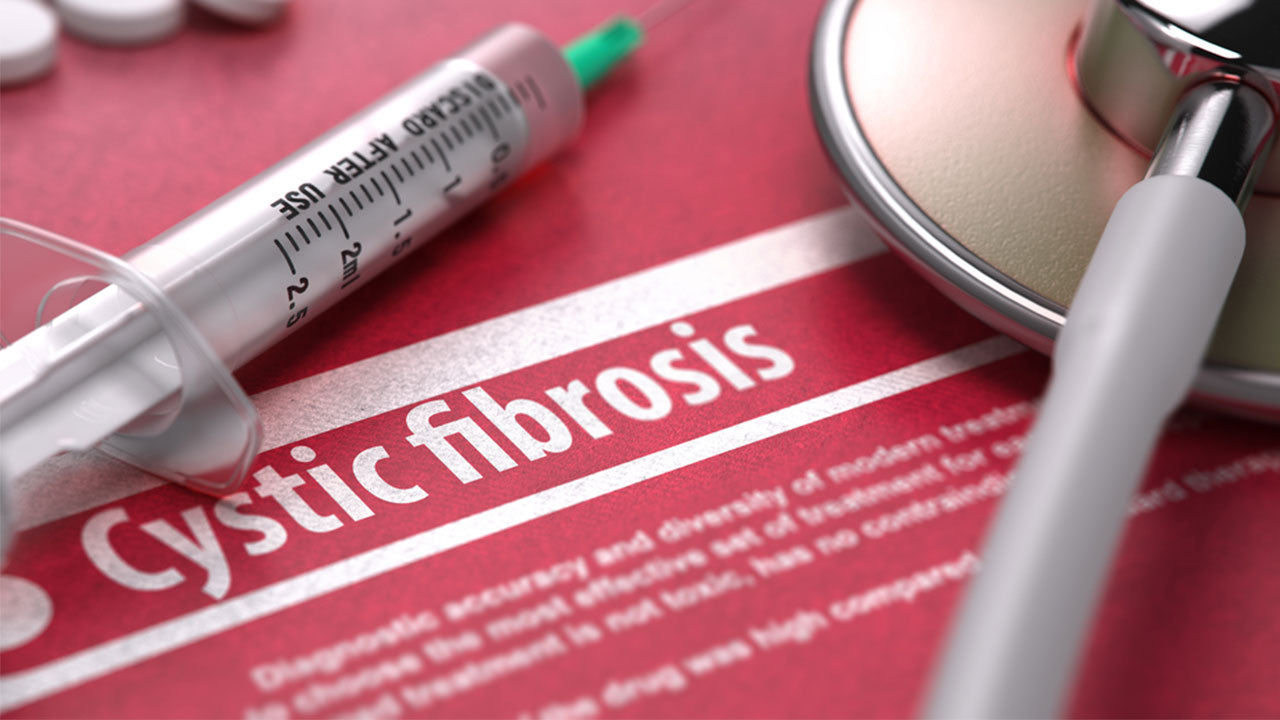Amino Acid Therapy for Parkinson’s Disease
 By: by Amino Science
By: by Amino Science

According to the American Parkinson’s Disease Association, about 1.5 million people in the U.S. suffer from Parkinson's. While treatment can provide some symptom relief for Parkinson's disease patients, at this time, there is no cure for this condition. Further, some of the most effective Parkinson's disease treatments can cause unpleasant side effects. Some researchers—most prominently, Dr. Marty Hinz—believe that amino acids can help to treat Parkinson's disease symptoms by correcting neurotransmitter imbalances linked to the condition. Read on to learn what research shows about amino acid therapy for Parkinson's disease.
What Is Parkinson’s Disease?
James Parkinson, a physician in 19th-century London, is credited with being the first to detail the symptoms of a neurodegenerative disorder now called Parkinson’s disease. Symptoms of the disease, however, were described as far back as 5,000 BCE in ancient Indian medical writings, and 2500 years ago in Chinese medical texts.
Parkinson’s disease, a progressive neurodegenerative disorder that impacts movement, muscle control, balance, and other bodily functions, is part of a group of conditions known as nervous system disorders.
Parkinson's, which affects movement, develops gradually. It often begins with a slight tremor in one hand. It is the most frequently diagnosed movement disorder and second only to Alzheimer’s disease as the most prevalent neurodegenerative disorder.
Incidence of Parkinson's ranges from 8.6 to 19 per 100,000 people. Statistics currently show that about 50,000 new cases are diagnosed in the United States every year, a number expected to rise as the population in the U.S. ages. Parkinson's disease onset before age 40 is rare, with prevalence rates for the disease averaging between 1% and 2% for people over the age of 60 and 3% to 5% for people over age 85. The disease affects all races and ethnic groups equally.
The three types of Parkinson’s disease are grouped according to the age at which they manifest. Adult-Onset Parkinson’s Disease, the most common type, has an average age of onset of 60, rising as people advance into their 70s and 80s. Young-Onset Parkinson’s Disease, occurring between 21 and 40, is rare in the U.S., and accounts for about 5 to 10% of diagnosed cases. Juvenile Parkinson’s Disease, with the age of onset before 21, is extremely rare.
Common Symptoms of Parkinson's Disease
Parkinson's symptoms vary according to the individual. Early signs, which can be so mild as to go practically unnoticed, may initially affect only one side of the body. They may also remain more prominent on that side, even when symptoms have spread to both sides. Typical symptoms include asymmetric tremors when at rest, rigidity, and bradykinesia (slow movement).
Parkinson's tremors usually begin in one limb, such as one hand or even just the fingers. One of the most common, a pill-rolling tremor, manifests as an involuntary rubbing of the thumb and pointer finger as if there were a pill between them.
Muscle stiffness, another frequent issue for individuals with Parkinson's, can happen in any part of the body, limiting range of motion and causing pain.
Independent of muscle stiffness, the bradykinesia associated with Parkinson’s disease can make it difficult to move. Tasks that were once easy can become challenging and take far longer to complete. A Parkinson’s patient may take shorter steps, have trouble rising from a seated position, and drag his or her feet when walking. Stooped posture as well as balance issues often arise.
There can also be less capacity for engaging in unconscious movements, such as blinking, smiling, or walking with arms that swing naturally by your sides.
Speech problems may develop too: a person with PD may talk softly or quickly, slur words, hesitate before talking, or speak in a monotone. The ability to write may also be impacted.
Additional complications may be treatable or minimized. These include:
| Fear | Cognitive problems |
| Anxiety | Depression and emotional changes |
| Loss of motivation | Swallowing problems |
| Sleep disorders | Bladder problems |
| Constipation | Blood pressure changes |
| Smell dysfunction | Fatigue |
| Pain | Sexual dysfunction |
What Causes Parkinson’s Disease?
Though the precise cause of Parkinson's disease remains unknown, it develops as the result of neurons breaking down or dying. Loss of these neurons decreases levels of dopamine, a neurotransmitter that carries information between brain cells. Dropping dopamine levels, in turn, cause many of the symptoms associated with Parkinson's to manifest.
In many cases, the underlying stimulus that causes neurons to begin to break down or die cannot be identified. However, genetic mutations as well as environmental triggers such as herbicides and pesticides appear to be instigating factors in some cases. While having a close relative with Parkinson's does somewhat raise your risk, the likelihood you will develop the condition remains quite low. The more family members who have the disease, the higher the risk a person faces. The increased risk posed by environmental triggers is even slighter and associated only with ongoing exposure. Researchers have also found that men are more likely than women to develop Parkinson's, though it is not clear why.
Intriguingly, clinical trials have found specific, predictable changes to the brains of individuals diagnosed with Parkinson’s disease. The cause for those changes, however, has yet to be identified. One of the hallmark brain changes linked to the development and progression of Parkinson's involves Lewy bodies, abnormal protein deposits within brain cells. These deposits have been shown to play a role in the development of several neurologic diseases. Scientists believe that investigating Lewy bodies could help unravel the mystery of what causes Parkinson's.
One of the most significant substances found in these deposits is a protein called alpha-synuclein (A-synuclein). Though scientists have not pieced out all the mechanisms by which A-synuclein contributes to Parkinson's, they believe that targeting its harmful effect could lead to the development of new treatment options.
There's also much interest in identifying methods for preventing the development of Parkinson's disease. Some research has shown that caffeine, green tea, and aerobic exercise may help to reduce the risk of developing Parkinson's.
How Is Parkinson's Disease Treated?
There is currently no cure for Parkinson’s disease, which always gets worse over time. Death is usually because of complications, including pneumonia or falling-related injuries.
Parkinson’s disease changes the quality of life for patients and their families. In order to make the most worthwhile treatment decisions, education is imperative. Some prescription drugs and surgical procedures may drastically improve symptoms.
Treatment plans for Parkinson's depend on symptoms, other health issues and medications used to treat them, metabolism, and age. Because most Parkinson's symptoms result from a lack of dopamine in the brain, many drugs attempt to replenish proper levels of dopamine or mimic the action of dopamine. Termed dopaminergic medications, these treatments target muscle rigidity, speed and coordination of movement, and tremors.
Though these medications can decrease symptoms for some Parkinson's patients, they do come with side effects, some of which can be severe. The list of reported side effects for top Parkinson's drugs includes:
| Confusion | Constipation |
| Anxiety | Nightmares |
| Twitching | Abnormal heart rhythm |
| Depression | Aggressive behavior |
| Mood changes | Altered mental status |
| Severe nausea | Blood pressure drop upon standing |
| Severe vomiting | Difficult or painful urination |
What Is Amino Acid Therapy for Parkinson’s?
As discussed earlier, many of the most prominent, motor function-related symptoms of Parkinson's disease can be traced back to insufficient levels of a neurotransmitter called dopamine. However, other symptoms such as sleep issues, mood changes, and more, are not linked to dopamine levels. According to an article published in the European Journal of Neurology, those symptoms stem from the influence of "complex, interconnected neuronal systems regulated by a number of different neurotransmitters." The authors go on to state that developing treatments that optimize levels of several neurotransmitters "could prove invaluable for the treatment of the disease."
A study published in the journal PLOS One in January of 2018 evaluated the relationship between concentrations of various amino acids in the blood and the progression of Parkinson's disease. The authors explained that amino acids are crucial to the central nervous system, serving as neurotransmitters, neuromodulators, and regulators of energy metabolism. Changes in blood concentrations of amino acids in Parkinson's patients have been linked to the amount of damage to the nervous system. The researchers discovered significant differences in concentrations of four amino acids: alanine, arginine, phenylalanine, and threonine. This specific amino acid profile could serve as a biochemical marker of Parkinson's progression, they concluded.
A separate study published in PLOS Biology by researchers at the University of South Florida in Tampa examined the role played by a naturally occurring human enzyme, cyclophilin 40 or CyP40, that appears to unravel protein aggregates that damage nerve cells and thus contribute to both Alzheimer’s disease and Parkinson’s disease. According to authors, their findings may lead to a new therapeutic strategy for both diseases.
The authors explained that proteins implicated in most nerve diseases form improperly and then become an insoluble clump called an amyloid. The clumping effect keeps neurons from functioning properly. Tau proteins usually stabilize activity in the central nervous system. When they become defective due to clumping, neurodegenerative diseases such as Parkinson's develop.
CyP40 could reduce the amount of aggregated tau, changing it into a more soluble form. Experimental expression of CyP40 preserved brain neurons and rescued cognitive deficits and disaggregated a protein associated with Parkinson’s disease. This was the first demonstration of a substance that can disaggregate an amyloid responsible for a neurodegenerative disease. CyP40 may bind to aggregated protein to unstack and separate the amino acid chain, or it may bind to the protein before it forms aggregates, preventing it from clumping.
The most significant link between amino acids and Parkinson's discovered so far, though, has to do with L-dopa, an amino acid and hormone that is synthesized in the body from the amino acid tyrosine. L-dopa can pass the blood-brain barrier where the brain converts it to dopamine. Per the Handbook of Clinical Neurology, the use of L-dopa "revolutionized the symptomatic treatment of Parkinson’s disease."
Though it is still considered the most effective treatment for the condition, it does have limitations and shortcomings, including the side effects discussed above. Furthermore, the long-term use of L-dopa can increase motor complications, leading to an adverse impact on quality of life.
Dr. Marty Hinz believes that amino acids, which act as precursors for various neurotransmitters, can be used to treat conditions linked to neurotransmitter imbalances like Parkinson's.
In a case study published in the International Journal of General Medicine, Hinz and two fellow researchers focused on the interactions and applications of the neurotransmitters serotonin and dopamine and their amino acid precursors. They state that most side effects and problems seen during treatment of Parkinson’s disease with L-dopa are the result of mismanagement of the amino acid precursors and systems affected by L-dopa. When L-dopa is given alone, levels of the amino acids tyrosine, tryptophan, 5-hydroxytryptophan (5-HTP), and sulfur amino acids such as cysteine all decrease. The Hinz Protocol, which the study refers to as a novel treatment protocol, hinges on correcting those relative nutritional deficiencies.
According to the 2016 study which also appeared in the International Journal of General Medicine, side effects occur when only L-dopa is administered to patients. To minimize the side effects of L-dopa, which include nausea, involuntary movements, and psychiatric problems, inhibitors need to be used. In other words, by administering L-dopa alongside 5-HTP, tyrosine, cysteine, and cofactors, the researchers created a balance between L-dopa and serotonin—a chemical messenger that is supposed to have an effect on mood, behavior, and sleeping patterns. When there is no such balance, the effectiveness of the L-dopa is minimized, according to the authors.
After 4 months, the study participant experienced improvements to the tremor in the upper and lower extremities and regained coordination in his left hand. He could use the computer keyboard and play the guitar. He had improvement in gait and balance, less depression and anxiety, and more willingness to go out in public.
Because of the side effects that often accompany therapy with L-dopa, a possible alternative could be taking dietary supplements of the amino acid L-tyrosine, the immediate precursor of L-dopa. Since tyrosine has a very low solubility, it is preferable to raise the tyrosine level by consuming phenylalanine.
Tyrosine is produced from the metabolism of phenylalanine, which is highly soluble and thus easy to absorb. However, a cautionary note is appropriate. While phenylalanine supplementation may be a viable alternative to L-dopa treatment in some instances, neither phenylalanine nor tyrosine supplements should be taken with L-dopa. The similarities in the molecules may inhibit the absorption of L-dopa from the gut, thereby limiting the effectiveness of the medication.
When taking supplements of any kind for a neurodegenerative condition such as Parkinson's it is important to follow the guidance of your doctor. Because the concentration of amino acids significantly impacts neurotransmitter production, it's helpful to keep levels of essential amino acids balanced. You can do so with research-backed, patented supplements from The Amino Company.


Up to 25% off Amino
Shop NowTAGS: benefits
Join the Community
Comments (0)
Most Craveable Recipes




 833-264-6620
833-264-6620



















